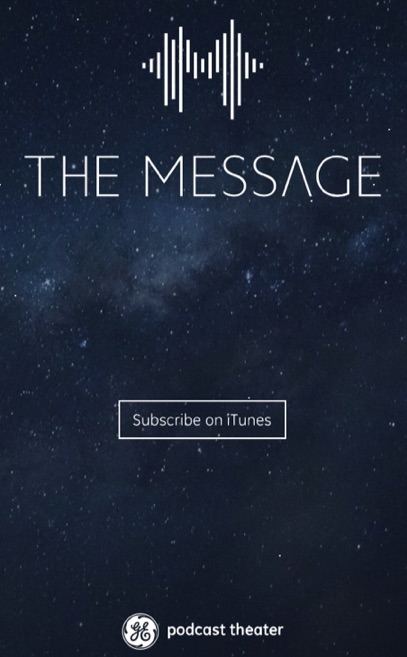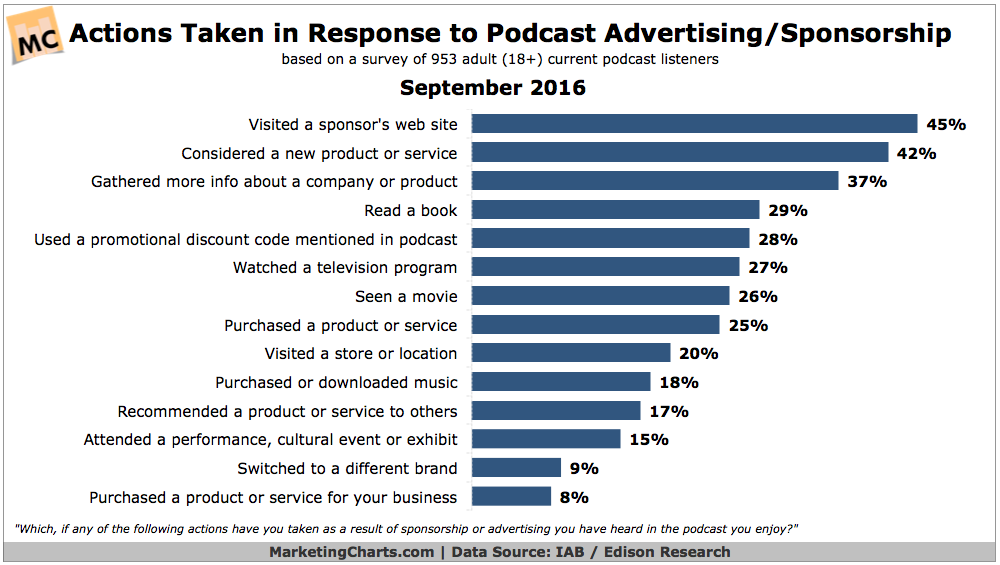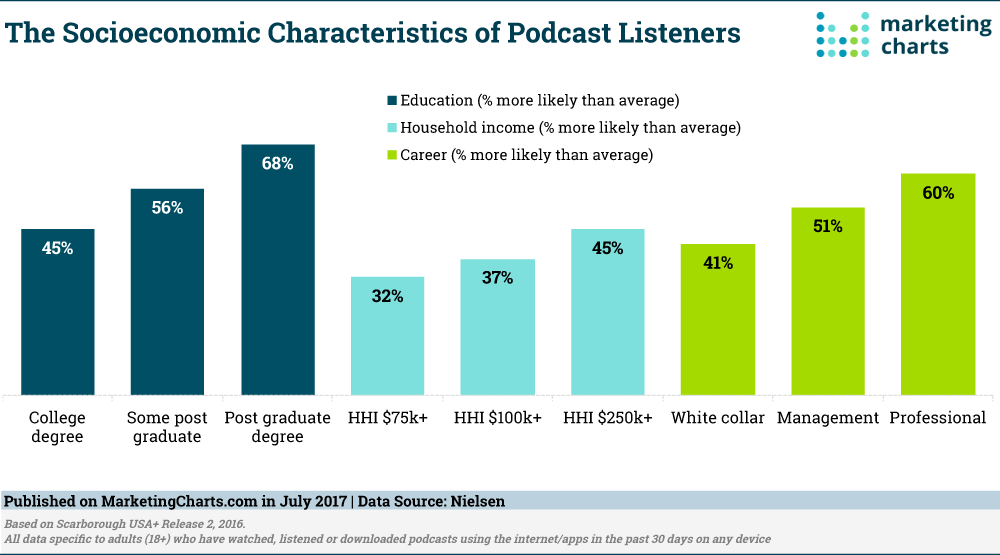When it comes to reaching engaged, relevant audiences, which marketing channels truly shine? Social media? Email? Webinars?
How about podcasts?
“Podcasts?” I can hear you thinking, “You mean those radio shows that were popular in the early 2000s?” Sure, podcasts may have hit critical mass thanks to Apple iTunes and the iPod back in 2004, but new research is showing that small businesses and brands alike are taking another look at the podcast as a formidable marketing tool.
Of course the question is — why podcasts? And why has this technology suddenly re-ignited? Let’s take a closer look:
Podcasts’ Surge in Popularity
According to a recent report from Infinite Dial, 40% of respondents reported listening to a podcast at least once, with 24% doing so monthly, and 15% doing so weekly. Year over year, online radio and podcasts in particular, have shown a growth that simply can’t be ignored. What’s more, according to a separate study from Triton Digital and Edison Research, Americans tuning in to podcasts on a weekly basis has almost doubled since 2013:
Listeners Are More Receptive to Products and Services
People are tuning in — and so are advertisers. There’s a lot for advertisers to like about podcasts, since almost two-thirds of listeners are more willing to consider products and services they learned about on a podcast. Over half of them believed that the hosts of the podcasts they listen to regularly are users of the products and services they mention on their respective shows. And those respondents reacted much more positively to products and services mentioned on the shows from the host themselves rather than a pre-recorded ad from a company or sponsor.
Just look at what actions listeners took after hearing about a product or service in a podcast:
In addition to high levels of receptiveness, relevancy and engagement, the kinds of people listening to podcasts are the very users many advertisers want to reach: relatively young, high income and high education levels, according to a survey from Nielsen:
Now the question becomes — how can brands and companies leverage this audience attraction?
Which Brands are Seeing Success with Podcasts?
One of the biggest points to keep in mind is that no one is going to tune in to a 20 minute commercial about your business. Take eBay, for example. Earlier this summer, Brooklyn-based audio company Gimlet Creative completed a branded podcast series for the auction company called Open for Business. It became the number one business podcast in iTunes when it released in June and talks to create a second season are already underway.
On the surface, it looks like Open for Business has very little in common with eBay itself. Topics include details on how to build a business from the ground up, including: how to hire, how an immigrant can start a business in the U.S., and so on.
Mentions of eBay itself are handled in a very light-touch manner. The podcast does, however, circle back by sharing the true story of a small business owner that found success on eBay. The last episode of the first series focused on the gig economy, which includes getting short term jobs and getting paid from gig-style platforms like Uber, Taskrabbit, Airbnb…and eBay.
The series was a hit — generating an average rating of 4.5 on iTunes and hitting 200% of its download goal.
And it’s not just how-to or curriculum-style podcasts that are getting noticed. GE leverages branded content by using its own sound technology in part of a sci-fi series known as The Message, where cryptographers attempt to decipher an alien message. GE itself isn’t mentioned anywhere in the podcast, but its technology is an integrated part of the storyline.

The Message currently has 5 million subscribers.
You can read more about General Electric’s foray into the digital marketing sphere in our post.
But before you get too excited about the potential of podcasts, it’s worth noting a few downsides.
Measuring Reach: Still In Its Infancy
Currently, the best way to measure how much reach a podcast has is the number of downloads and the number of subscribers to a given channel. Podcasts do not yet have the ability to tell you things like how long people listened or, for example, if someone played a podcast in their car with a group of friends.
What’s more, podcasts don’t correlate the number of downloads to the number of subscribers, so hosts don’t know what percentage of their listeners tune in on a weekly basis, or download an episode. How many people listen one time and then never listen again? No one knows.
Even Apple’s podcast app doesn’t provide statistics or analytics that show what kind of reach the podcast has. So, keep this in mind if you’re looking for measurable marketing gains with podcasts — the information you get is fairly shallow compared to the deep, insightful analytics you get with other marketing channels.
Podcasts Set a Higher Bar for Quality
If you’re looking at starting your own podcast, you can see from the examples above, as well as the top podcasts for your particular industry, that there’s a much higher bar set in terms of quality and consistency than with creating other types of content. Articles like this one may take just a few minutes to read, but with a podcast, you’re asking people to tune in for roughly 20 minutes or so per week – the approximate length and schedule for podcasts in general.
That means you have to commit to a standard of quality and a publishing schedule that’s both dedicated and deeply involved. It’s quite the challenge, to be sure, and many companies — even large ones — simply cannot afford that kind of time investment with so many other digital irons in the fire.
Small and medium-sized businesses, however, can look at podcasts as an opportunity to map out a higher grade of content that not only enthralls and engages listeners, but also leaves them wanting more. And although the bar for quality is higher, the receptiveness of the audience and their eagerness to take the actions you want them to take after learning about your product or service is definitely worth it.
And although podcasts have risen and waned in popularity throughout the years, the proliferation of online radio, smartphones and home devices like Google Home and Amazon’s Alexa have made tuning into podcasts even more accessible than in a the past. If all indications are showing increasing growth and user adoption, it’s safe to say that podcasting isn’t just a fad — but like all marketing initiatives, the sooner you start, the sooner you can reap the benefits rather than falling behind and being looked at as an “also-ran” by your potential customers.
Do you use podcasts in your own marketing campaigns? What have your results been so far? Share your thoughts with us in the comments below and let us know what tips you have for fellow podcasters who are looking to get started! We can’t wait to hear from you!
About the Author: Sherice Jacob helps business owners improve website design and increase conversion rates through compelling copywriting, user-friendly design and smart analytics analysis. Learn more at iElectrify.com and download your free web copy tune-up and conversion checklist today!


